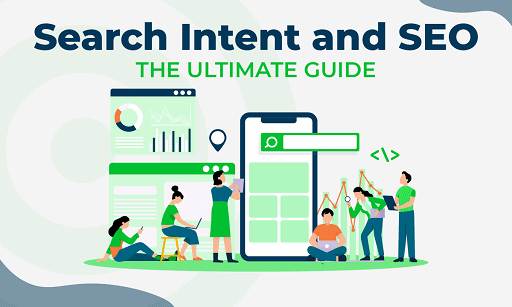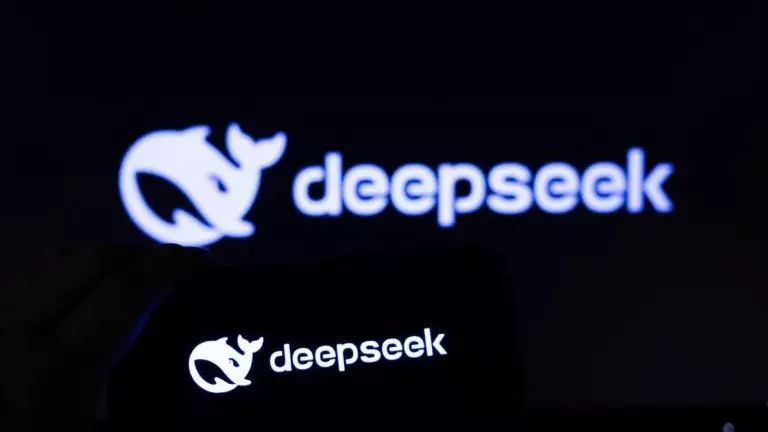User intent is the bedrock of strategic SEO efforts. It’s a strong tool that allows brands to rise above just chasing consumers and actually engage them through effective content.
This post will explain what user intent is, why it’s such an important part of a search, and how to integrate it into your SEO strategy with ease.

What is User Intent
User intent in SEO is the very underlying motive or purpose that a user makes their online search query for. This is all about understanding what a user is trying to achieve or find when specific keywords are typed into the search engine.
In SEO, user intent is the intention or purpose that makes a user type certain queries into the search engine. In other words, it’s the reason, the “why,” behind the action of searching for something by the user, irrespective of the device used. User intent could be a need, want, desire, or problem; user intent navigates the very first step in typing a query into the search bar.
User intent can be categorized into different types, including:
- Informational Intent: Users seeking information, answers to questions, or solutions to problems. Example: “How to tie a tie.”
- Navigational Intent: Users looking for a specific website or brand. Example: “Facebook login.”
- Transactional Intent: Users are ready to make a purchase or complete a specific action. Example: “Buy iPhone X online.”
- Commercial Investigation Intent: Users researching and comparing products or services before making a decision. Example: “Best laptops for gaming.”
Understanding user intent is crucial in SEO because it allows marketers and website owners to create relevant and valuable content that aligns with what users are searching for. By addressing user intent effectively, websites can improve their search rankings, increase organic traffic, and enhance user engagement and satisfaction.
There are distinct ways to approach user intent.
You can also read: The Importance of Bottom Of Funnel Keywords In SEO for Brands
Leverage the Position of a User in their Journey Stage
SEO management requires great knowledge regarding the stage that a user has reached in their search journey. The creation of positive experiences and effective involvement with your audience is possible through the alignment of your content to meet their expectations.
It can be hard to find out the stages of the user’s journey, but they usually leave keywords through their search behavior. For a content strategist or SEO professional, it is all about recognizing and interpreting these signals.
An example use case on how to spot funnel position signals is described below.
Awareness of User Intent:
At the “Pain Conscious” stage, users make broad, short-tail keyword searches because they are aware of their pain, need, want, or desire, but they are not sure about the specific solution or provider.
In the “Gain Conscious” stage, users have a general idea of what they are looking for, so they narrow down their search but remain top-level. They are still unsure of the provider.
Moving into Product Awareness:
As users progress, they will become “Product Conscious” by seeking specific product solutions for their needs. Searches also become more specific, and longer tail keywords are used.
Considering Financial Aspects:
Users reach the “Dollar Conscious” stage when their queries include considerations of cost or financial implications. They search for solutions within their budget.
You can also read: The Importance of Search and SEO
Using User Intent for Content Strategies:
Understanding user intent at different stages enables tailoring content to their needs, fostering connections, and converting potential customers into loyal ones.
Improve your ability to recognize user keywords that will drive your strategy forward
To validate where users are in their search journey, understand the keywords they provide based on their search behavior, and their lingual preferences. Recognizing the stages in the user’s journey is not enough; you have to understand user expectations about content in each stage to create useful content.
At Pain-Conscious” stage, users use phrases such as “who,” “what,” “learn,” and “ideas”; they want to understand and be educated on their issues. This means creating content about sharing information and educating your audience about problems should be your focus when using these keywords.
As users move into the “Gain or Product-Conscious” stages, searches shift to terms like “best,” “compare,” and “for,” which indicate that they want to see brands demonstrate their expertise and help them with their identified pain. Highlighting brand terms and product names in your content to serve users at this stage will be a good idea.
At the “Product-Conscious” stage, users’ searches are more specific in product names and categories. You need to tailor your content to highlight specific products, brands, and categories, as users look for detailed information at this point.
Finally, when users are ready to make a purchase, their searches focus on terms like “buy,” “discount,” and “price.” Here, your content should direct users to product and comparison pages, and focus on the keywords that drive their decision to facilitate conversions.
User Intent and Keyword Research
Keyword research has been a staple in strategic SEO decisions, but it can no longer stand on its own. It is no longer possible to simply rely on keywords for SERP rankings without considering user intent.
Historically, SEOs have targeted high search volume or seasonal terms, but today we need to look at the “why” behind the search. As you perform keyword research, remember your core goal is to add value for your audience and to meet their needs through every step of the search journey.
You can also read: Effective SEM Best Practices You Should Know
Emphasize creating pain-conscious and dollar-conscious content that aligns with user intent. Instead of a random collection of terms, adopt intent-based strategies to develop a focused content strategy that caters to user needs.
Brands can choose to target identified weaknesses in product-conscious content, focus on pain-conscious content, or address gaps across the entire journey. By placing user intent as a foundational piece of the puzzle, strategists can gain a broader understanding of the landscape and better inform their brand’s strategy.
Example: Canvas ‘color palette’ ranking strategy
Canva, the design tool, did a great job in user intent to rank images from their website in Google. The brand didn’t just work on keywords and search volume, but found out that “color palettes” were mostly used by people asking for inspiration and ideas.
To that end, they developed inspirational content; thus, their page is favorably ranked at the top of Google search results. This example shows it is possible to improve SERP ranking by paying attention to and catering to user intent.
How to Discover User Intent
Step 1: Identify your audience
Start by understanding your target audience, including demographics and psychographics. Dive deep into their behaviours, interests, and lifestyle to create an effective SEO strategy.
Step 2: Analyze the keywords
Based on your audience’s psychographics, compile a list of keywords and assess their relevance. Analyze how your target consumers use these keywords during different stages of their search journey.
Step 3: Understand the search journey
Gain insights into your users’ search journey and the stages they go through. This will help you focus on critical stages to tailor your brand’s content.
Step 4: Study the SERPs
Analyze the search engine result pages (SERPs) for your target keywords. Well-ranking content can reveal the platform’s understanding of user intent. Monitor the SERPs for changes, as user intent may evolve over time.
Step 5: Learn from your competitors
Examine your competitors’ highly-ranking content to understand how they address user intent. Identify areas for improvement and strive to create better content to compete for higher SERP rankings.
Step 6: Take insight from the creators
Use content creators who are close to and understand your audience. Build your relationships with them to help your SEO content strategy, since they often bring insights into speaking with your target audience.
Step 7: Use the correct tools
Use must-have tools that provide a strong foundation for your SEO strategies with a user intent focus. Some tools you can make use of are:
- Google Trends: Identify term popularity and user intent trends over time.
- Google Analytics: Analyze site traffic and identify driving keywords that align with user intent.
- Answer the Public: Generate keyword-related questions to show user queries.
- Semrush and Ahrefs: Provide detailed keyword analysis and insights into user intent through top-ranking pages for specific keywords.
You can also read: Best Keyword Research Tools for Content Marketers
Optimizing content based on user intent
Now that you’ve gained insights into your users’ minds, it’s time to apply this knowledge to optimize your content. Consider these techniques:
Craft content to match intent:
Tailor your content based on the user’s intent. For pain or gain-conscious intent, provide comprehensive and valuable information. For product or dollar-conscious intent, ensure persuasive and clear product descriptions, images, and calls-to-action.
Prioritize user experience:
Content experiences play a crucial role in your SEO strategies. Use internal links to relevant content, not just product pages, to guide users through their journey. Strategically link to product or dollar-conscious pages when appropriate.
Use intent-specific keywords:
Incorporate long-tail keywords that align with the user’s intent. For dollar-conscious intent, include phrases like “buy online” or “free shipping,” but avoid using them at the pain-conscious stage.
Update and leverage old content:
Identify user intent and update underperforming content accordingly. Stay informed about recurring trends to optimize older content that becomes relevant to your audience.
By implementing these techniques, you can create content that resonates with your users and meets their specific needs throughout their search journey.
Avoiding Pitfalls Related to User Intent
Avoid the following common mistakes that brands and marketers make when trying to integrate user intent into their SEO strategies:
- Not recognizing the differences in user intent: Know that even with similar search terms, the intent of users may be very different. Deep and continued keyword research and trend analysis are necessary to understand all the nuances of user behavior and intent.
- Not taking into consideration the user’s journey: Consider the different stages of the user’s journey when writing your content. Create content that satisfies the needs of the users at each stage of the journey, and make sure it aligns with their intent.
- Assuming high traffic means high intent: High-traffic keywords do not always serve the intent of your target audience well. Instead, identify and use high-intent keywords, which will drive more users who are interested in your product or service.
- Ignoring long-tail keywords: This doesn’t involve targeting only short and catchy keywords. You want long-tail keywords in the content strategy since these have a better level of being specific to user intent or points in their journey, and might generate a high lead conversion rate.
Understanding these potential pitfalls, one could actually find a more robust and applicable SEO strategy for their targets and get much better returns for their business.
SEO is a long-term endeavor, not a Quick Sprint.
Integrating user intent into your SEO strategy goes beyond increasing website traffic.
The ultimate goal is to attract the right audience – those who actively engage with your content, become customers, and use your services.
By understanding user intent, you can build a thriving community of ideal customers from your target audience, ensuring meaningful interactions and long-term relationships. Intent becomes a powerful tool in achieving this objective.
Would you like to read more about the importance of Bottom Of Funnel keywords in SEO for Brands-related articles? If so, we invite you to take a look at our other tech topics before you leave!
![]()










